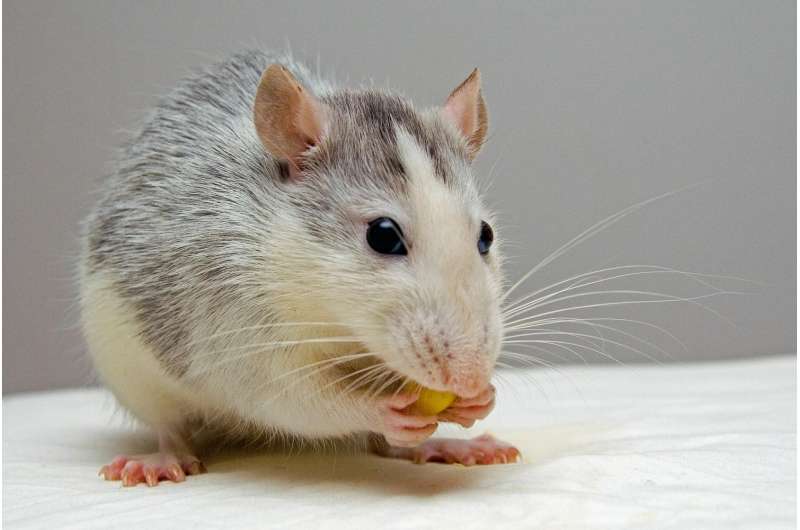Researchers find brain region that affects drug use habits

The human brain is nimble. It can reorganize itself to learn new things, catalog memories, and even break old habits. So, what if our brains could be taught to suppress cravings, especially the destructive impulse to use drugs?
University of Iowa researchers studying the infralimbic cortex—a region of the brain that controls addictive behavior—performed a series of experiments in which rats were given cocaine, then taken off the drug. The scientists found that, generally speaking, this region of the brain can be reprogrammed to ease the rats' cocaine urges.
The finding could help users kick the habit with the help of drugs that target the infralimbic cortex—or with improved behavioral treatment for substance addiction and relapse, according to Andrea Gutman, a postdoctoral researcher in the UI Department of Psychological and Brain Sciences and corresponding author on the paper, published in the Journal of Neuroscience.
The infralimbic cortex, a part of the prefrontal cortex located toward the front of the head, is responsible for forming habits and regulating behavior. Think of it as a mental green light or a check on destructive or embarrassing tendencies.
Researchers already knew about that role, but they were unsure how it controlled cravings and other habit-forming behaviors—or whether the infralimbic cortex could be manipulated to temper impulses. The UI team worked with a group of rats that were administered cocaine when they pressed a lever with their paws; the rats did so for two hours per day over the course of two weeks.
Over the next two weeks, the rats received no cocaine when they pressed the lever. When they realized they were no longer getting the drug, the rats pressed the lever less frequently, until, by the end of the two-week period, "they hardly pressed the lever at all," Gutman says. In other words, at least some of the rats learned to curb their addiction.
A second group of rats followed the same regimen as the control group and were allowed to use cocaine for two weeks. However, in this second group, the researchers turned off neurons in the rats' infralimbic cortex just as the animals pressed the drug-dispensing lever. By silencing those neurons for a period of 20 seconds every time the rats pressed the lever, the researchers in effect prevented the rats from learning to curb their drug appetite. The rats' cravings remained as intense as in the beginning of the experiment, even though they weren't receiving the drug.
"They're failing to learn to inhibit their cocaine craving," says Gutman, who works in the lab of Ryan LaLumiere, assistant professor in the UI Department of Psychological and Brain Sciences. "They want the cocaine just as much."
The researchers silenced the neurons in the rats' brains for the first five days of the cocaine-less two-week period. They found that these five days had a major impact on how effectively rats learned and began to adapt to the drug's absence. The rats whose neurons were silenced were more likely to relapse than those that underwent withdrawal, the study found.
The results strengthen the hypothesis that the infralimbic cortex plays an important role in the suppression of addictive behavior. It also points to when the region could best be "taught" to curb a habit.
"No study has looked intensively at exactly how the infralimbic cortex functions, nor the importance of the first five days of treatment when it comes to curtailing drug-seeking behavior," says LaLumiere, the paper's co-author. "And while our experiments involved cocaine, we think the results could hold true for the infralimbic cortex's role in conditioning withdrawal and relapse from other addictive substances, including opioids."
Kelle Nett, Caitlin Cosme, Wensday Worth, and Subhash Gupta, all from the UI, helped perform the research and are contributing authors on the paper. John Wemmie, UI professor of psychiatry, also is a contributing author.
More information: Andrea L. Gutman et al, Extinction of Cocaine Seeking Requires a Window of Infralimbic Pyramidal Neuron Activity after Unreinforced Lever Presses, The Journal of Neuroscience (2017). DOI: 10.1523/JNEUROSCI.3821-16.2017

















